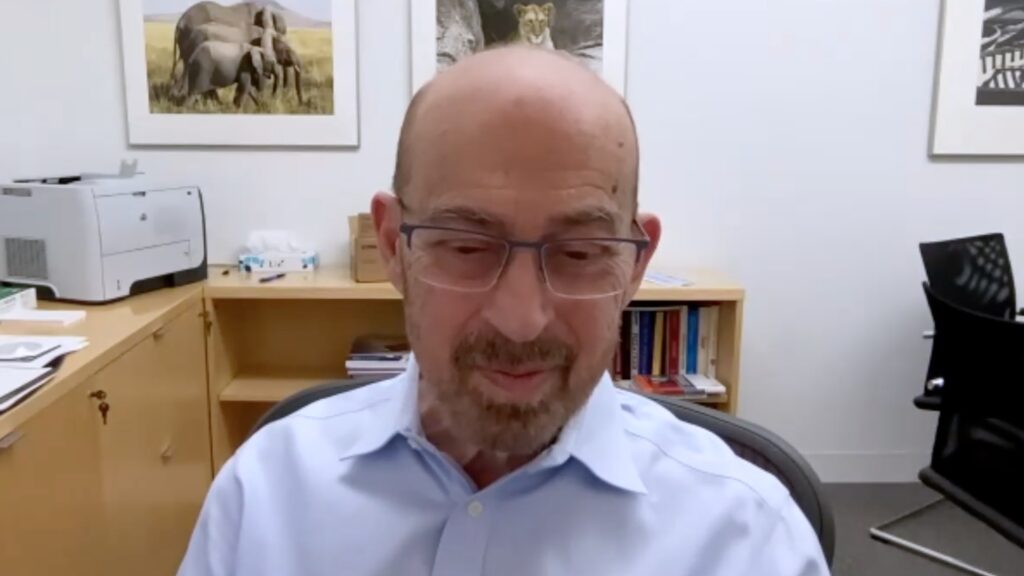The REVIVED-BCIS2 trial assessed the use of myocardial viability tests in predicting prognosis following revascularization in patients with ischaemic left ventricular dysfunction. In this touchCARDIO interview, we speak with Professor Divaka Perera (Guy’s and St Thomas’ NHS Foundation Trust, London, UK) to discuss the REVIVED-BCIS2 trial, its findings and the impact these results will likely have on clinical practice.
The abstract entitled ‘Effect Of Myocardial Viability, Percutaneous Coronary Intervention And Functional Recovery On Clinical Outcomes In The REVIVED-BCIS2 Randomized Trial’ (Abstract number 403-10) was presented at ACC.23 Together With WCC (ACC.23/WCC) in New Orleans, 4–6 March 2023.
Questions:
- What were the aims and methodology of the REVIVED-BCIS2 viability trial? (0:17)
- What were the findings of the trial? (3:23)
- What is the potential clinical significance of these findings? (5:40)
Disclosures: Divaka Perera has nothing to disclose in relation to this video.
Support: Interview and filming supported by Touch Medical Media. Interview conducted by Danielle Crosby.
Filmed as a highlight of ACC 2023
Access more content on Cardiovascular Disease here
Transcript:
Hello I’m Divaka Perera. I’m a consultant cardiologist at Guy’s and St Thomas’ Hospital in London and a professor of Cardiology at King’s College London.
Q: What were the aims and methodology of the REVIVED-BCIS2 viability trial?
The original REVIVED trial looked at the hypothesis that PCI would be of benefit compared with medical therapy alone in terms of prognosis, which is to say freedom from death or heart failure hospitalization and also early recovery. Overall, what the trial showed was that it does not. There is an improvement in LV function in these patients over time, but it is the same in patients of medical therapy alone or medical therapy plus PCI. Similarly for the important prognostic outcome of death or heart failure hospitalization. PCI did not seem to give you any benefit over medical therapy. These patients had a very high event rate but PCI was not the way to improve it.
Following that trial, there still remained the question, well, is it related to viability? If we look at the extent of hibernating myocardium, then might we pick up a group of patients who would benefit and from those who would not? But the thinking being that the more hibernating myocardium you have, the more likely you are to do better with revascularization, PCI in our trial, compared with treating you with tablets alone. Therefore, it was really the central question: does viability testing allow you to pick a patient who will benefit from revascularization? However, the broader question, even beyond the issue of PCI versus medical therapy alone, is that do these tests allow us to predict prognosis in patients with ischaemic cardiomyopathy, regardless of which treatment you give them? Prognosis being death or heart failure hospitalization or LV recovery. So in the population as a whole. Is it a useful risk stratifier? Also, when you come to the question of PCI versus medical therapy, does it allow you to select patients for PCI?
To get into the REVIVED trial, you needed to have a minimum threshold of viability, and this was done across all of the 40 recruiting centers in the UK and they judged their own results for if a patient had sufficient viability or not. As part of the viability analysis that we just presented, we collected all of the cardiac MRI scans and stress echoes from across the UK and ran it through core lab analysis. This was a very standardized methodology done by individuals who had no idea who the patients were, what the treatments were, whether they were assigned to PCI or medical therapy, et cetera. That gave us a very robust, centrally adjudicated measure. Through this, we came up with two main types of metric. One is the amount of hibernating myocardium that an individual has and the other is, and this was only limited to the chronic MRI cohort, the total volume of scar in the ventricle. We compared this and looked at the association between these metrics and outcome.
Q: What were the findings of the trial?
The first finding, which surprised many and I think will change practice, is that the amount of hibernating myocardium or the total burden of scar has no bearing on whether you benefit from PCI or not. This is practice that happens week on week in multidisciplinary team meetings around the world. We will say this patient has viability, we should operate on them or give them PCI; this patient does not have viability, let’s treat them with medical therapy. Our findings say that practice really cannot be supported as there is no relationship between the amount of hibernating myocardial scar and whether they benefit or do not benefit from PCI. So that is the first finding. The second was looking at the cohort as a whole. Is it of value in terms of determining how they are going to do? Hibernating myocardium, that is to say parts of the heart that do not work but are still alive, really does not seem to predict whether you are going to survive free of heart failure hospitalization, or even whether your left ventricle is going to recover. So it kind of goes right back to core principles and challenges there. We thought viability tests were the prospective equivalent of hibernation and, therefore, if you got it right and you selected a patient right, the LV should recover. That does not work. What does work is scar burden. If you quantify the scar burden, that is highly predictive of the risk of your dying, having a heart failure hospitalization and also recovering or not. The more scar you have, the less likely your ventricle is to recover. Now, that is really significant because at the moment the amount of scar is not used in clinical algorithms to stratify risk. But maybe it should and maybe if we use scar, then we might be able to really select out our patients who are going to do badly and focus more advanced therapies on them.
Q: What is the potential clinical significance of these findings?
I think these findings will have quite widespread clinical application. Firstly, I do not think we can continue to use viability tests like we use them now because they are not of use in deciding who should have revascularization. Secondly, I think guideline committees may need to consider other factors when triaging these patients or stratifying risk. At the moment it is all based on LV function. If LV function is really poor, then you would be a candidate for ICDs and such alike. But I think we need to progress beyond that and perhaps think about scar and use scar as well. However, in our study, scar was more predictive of outcome than that LV function. So I think practice and guidelines will change quite significantly. The final change, which is not a clinical change but an academic one, is the question of is our whole concept of hibernation right? Or do we need to revisit the paradigm?
Subtitles and transcript are autogenerated












